





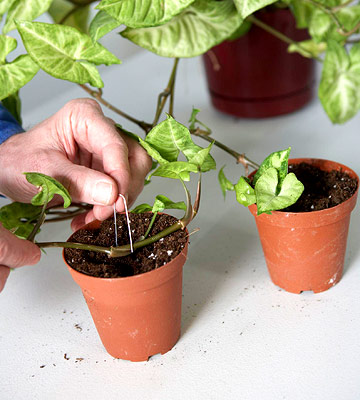
Some houseplants such as spider plant and strawberry begonia reproduce by sending out runners with new plantlets at the end. It's super simple to root these to start new plants.
Other varieties such as bromeliads send up new shoots at the base of the plant or offsets, which you can divide and put into pots.
Climbing houseplants such as philodendron and pothos form new roots where their stems come into contact with soil. Or start new plants from cuttings or by air layering houseplants with woody stems.
Click here for more on propagating houseplants.
continue reading below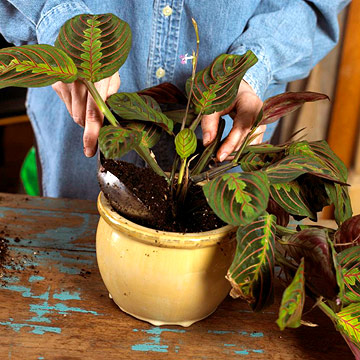
Not sure if your houseplants need repotting? Check the root systems. If the roots are circling the inside of the container, it may be time to repot the plant. If the plant has outgrown its pot you can transplant it into a slightly larger container. If you'd like to keep it in the same pot, trim off some of the roots with a sharp knife and replant it into the container using fresh potting soil.
As you repot your houseplants, it's also a good time to divide those with multiple stems to get new plants. Spring and summer are the best seasons for repotting your houseplants.
Click here for more on repotting houseplants.
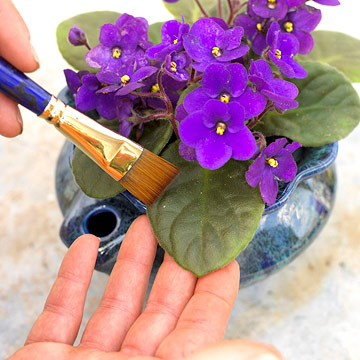
Almost all houseplants look better with regular grooming. Dust collects on leaves, so wash them with a gentle shower of room-temperature water or dust them with a soft brush if the plants have hairy leaves. This improves the plant's appearance and keeps the leaf pores unobstructed so that the plant gets more light.
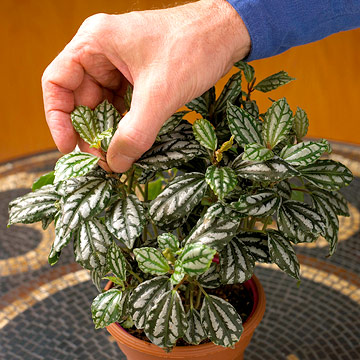
The main reason for pruning houseplants is to make them look better. If one of your plants has a branch that's too long, cut it back to a side shoot or main stem. Also remove any dead or diseased leaves and stems to help prevent the problem from spreading. Rejuvenate overgrown houseplants by cutting them back to 4 to 6 inches tall. This technique is effective in encouraging new growth for trailing plants such as Swedish ivy and pothos that may have become bare at their bases.
Pinching means you remove stem tips, either with your fingernails or pruners. Pinch out the tip of a stem and the topmost leaves to promote growth of side buds. Plants that grow rapidly often look best with frequent pinching to keep them compact and bushy.
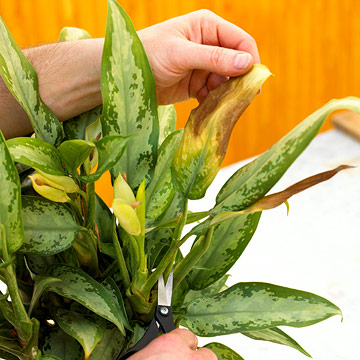
Trim faded flowers from your plants to keep the plant blooming and help prevent disease problems. While you're at it, be sure to remove yellow, brown, or withered leaves. Use a narrow-blade hand pruner or sharp scissors to make a clean cut without tearing the plant's stem.
Click here for more on grooming houseplants.
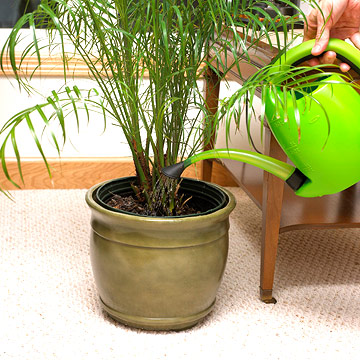
Overwatering is one of the most common causes of houseplant death. If you're not sure how much to water, it's better to err on the dry side than to give your plants too much moisture.
All houseplants have slightly different watering requirements depending on how they are grown and changes in plant growth through the seasons. Therefore, it's best to water on an as-needed basis rather than by a set calendar schedule. In general, plants grown in well-drained soil in an appropriate-size container should be watered when the top 1/2 to 1 inch of soil feels dry. Cacti and succulents need less water; flowering plants usually need slightly more.
Click here for more on watering houseplants.
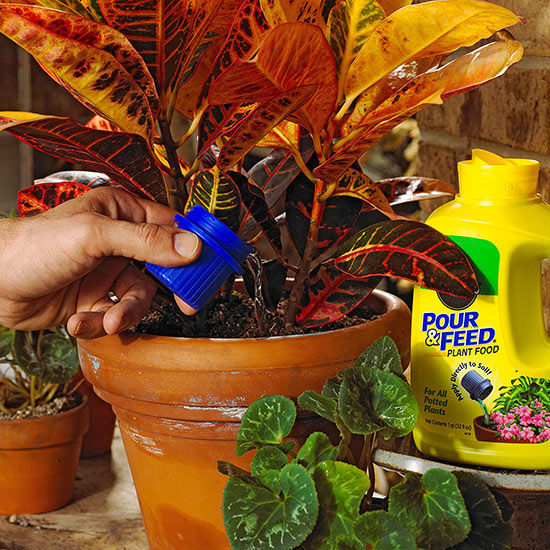
Like watering, there's not an easy guideline to know how much to fertilize: It depends on plant's growth rate and age, and the time of year. Avoid feeding houseplants when they're not actively growing or if they are stressed.
Most houseplants put on a growth spurt in spring and summer. This is the best time to fertilize them. During the short days of fall and winter, most houseplants need little, if any, fertilizer. Follow label directions to know how much plant food to use.
Fertilizers come in a broad array of formulations, and it's important to avoid overfertilizing your houseplants. Too much fertilizer can burn their roots and stunt their growth. For flowering varieties, use a fertilizer in which the three numbers on the label (nitrogen, phosphorus, and potassium, respectively) are relatively equal. If the nitrogen content is too high, the plant may grow a lot of leaves, but few flowers.
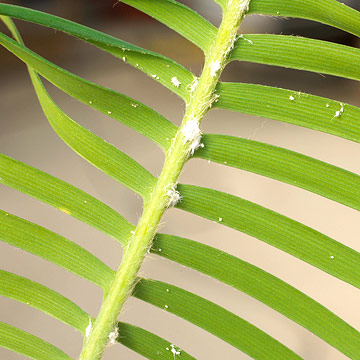
Several insects commonly attack houseplants. Insecticidal soap is an easy-to-use, effective treatment for most soft-bodied pests such as aphids and spider mites. A forceful spray of water from the hose may knock down the population of these pests, too. Rubbing alcohol is effective on insects with waxy coatings such as scale and mealybugs.
No matter what treatment you use, be consistent. For fast-reproducing pests such as aphids and spider mites, you may need to treat plants once a week for a month or so to be rid of the pests.
Fungus gnats are tiny black flies that buzz around the soil; they're often confused with fruit flies. You typically see fungus gnats in large numbers when plants are overwatered. Allow the soil surface to dry between waterings.
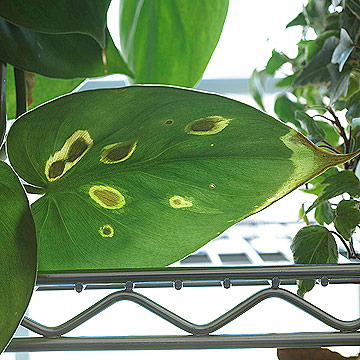
Remove and destroy diseased houseplants or affected leaves or stems as they develop to prevent spread of the disease. Some diseases spread by insects, so keeping the insect population in check helps prevent disease problems.
Click here for more on how to prevent houseplant problems and download our Houseplant First Aid chart.
Copyright © www.100flowers.win Botanic Garden All Rights Reserved